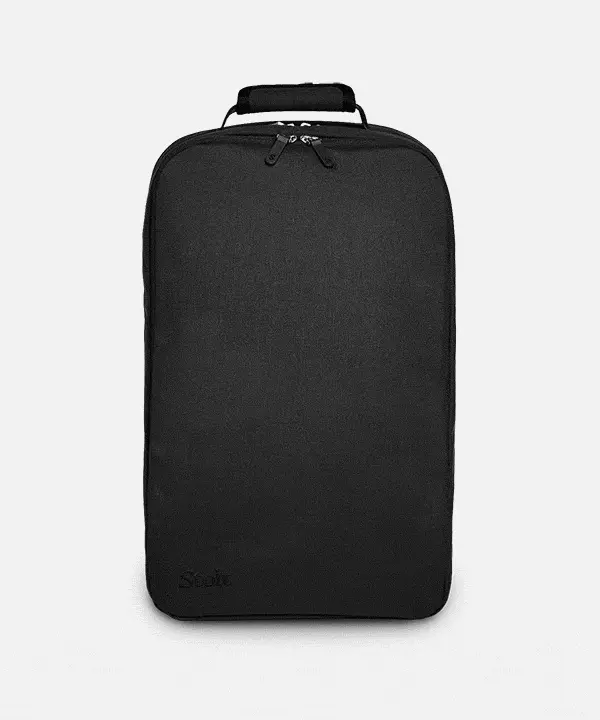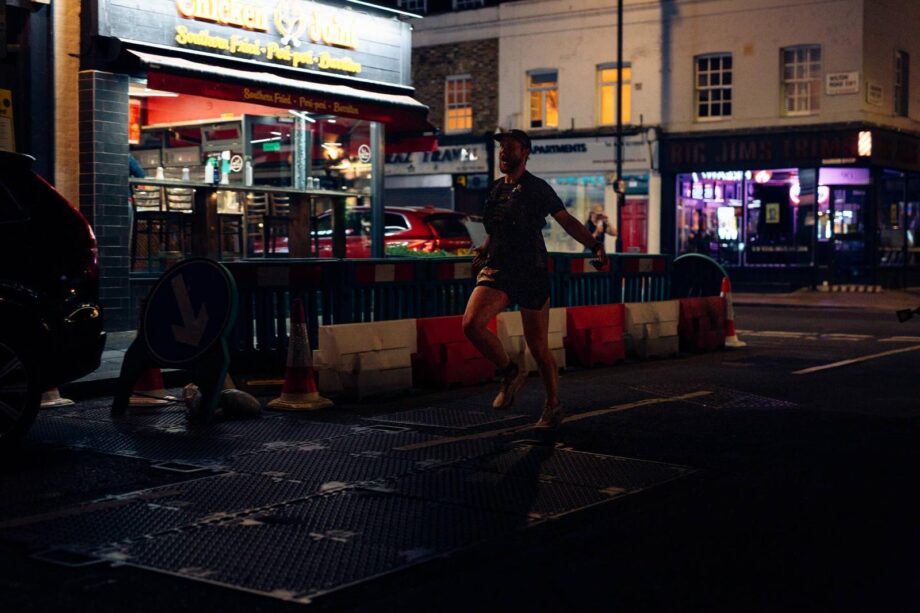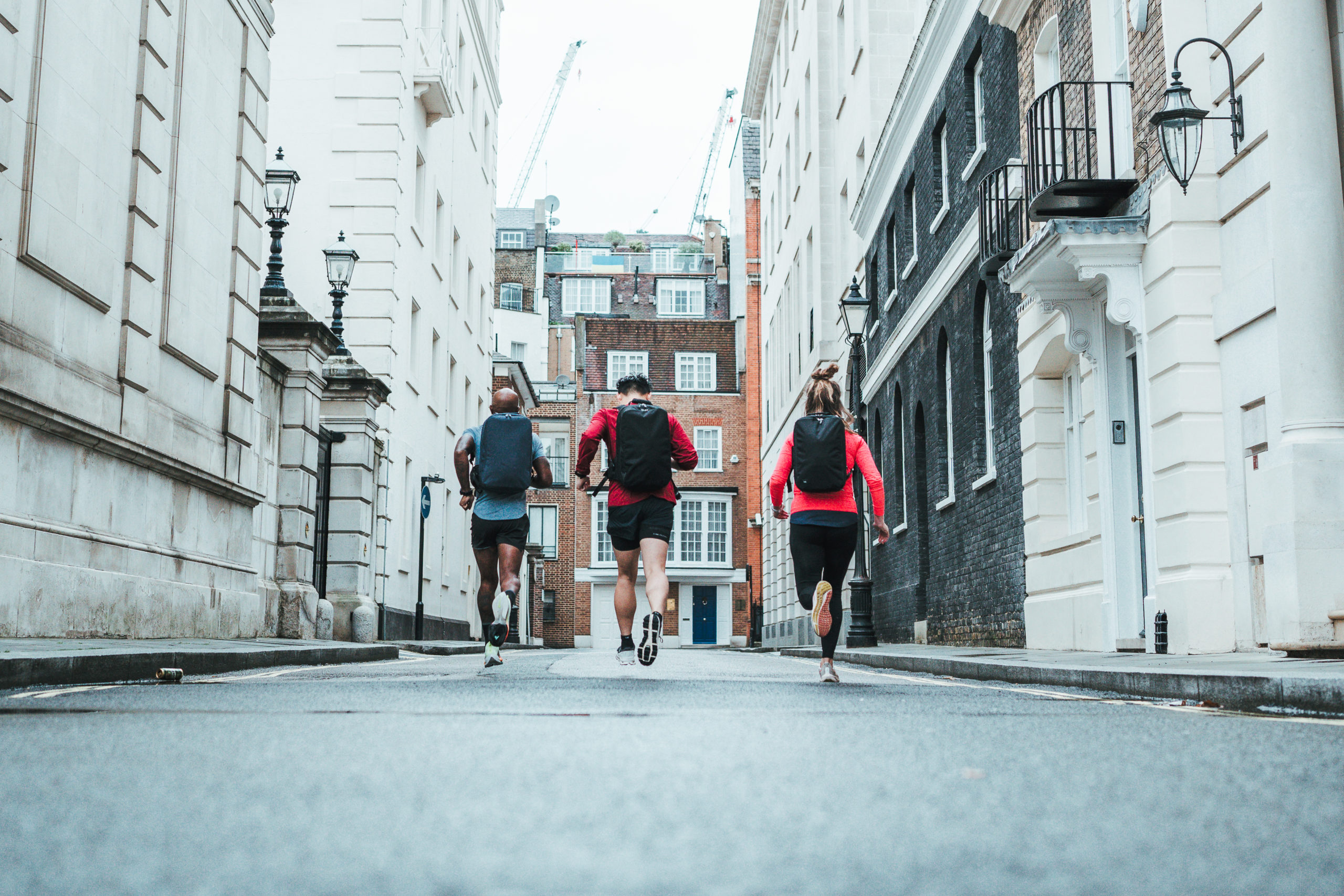RUN COMMUTING IN 2025. London has long been regarded as the run commuting mecca of the world, but with the increasing popularity of running, other major cities in the UK and globally are joining the movement.
As long-established champions of run commuting and run commuters, here’s our updated guide on everything you need to start running to work in 2025.
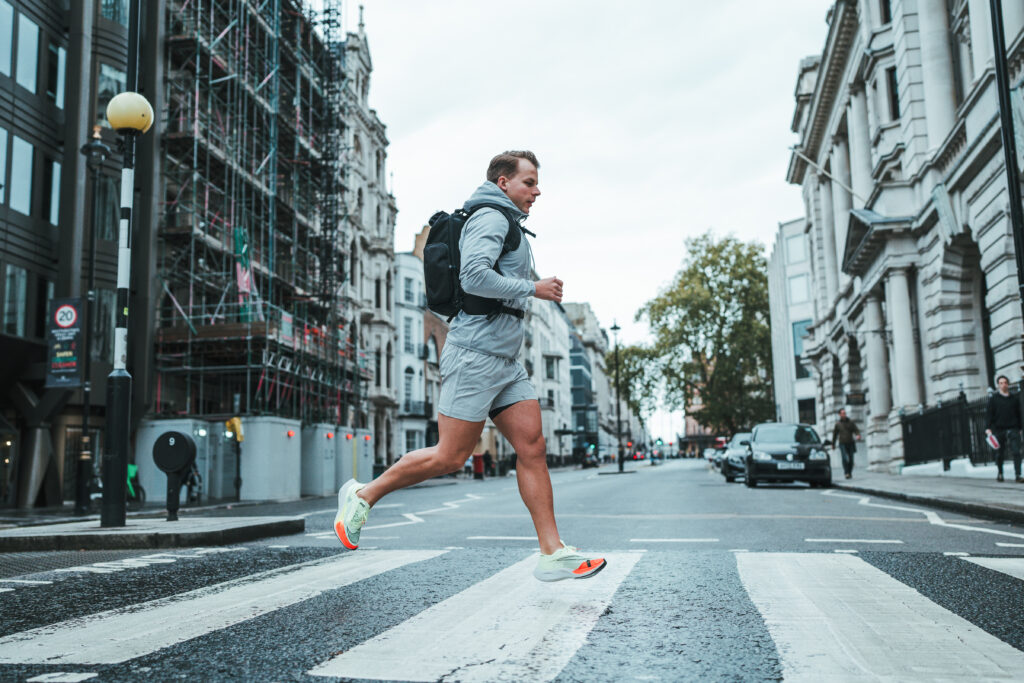
PLAN YOUR ROUTE FOR RUN COMMUTING
The first question is: how long is your commute to work, and is it runnable from door to door?
For many of us living in big cities, especially in Europe, running to work is often quite feasible, as the cities have great walking pathways and your commute is usually less than 20km, often less than 10km.
Depending on your current fitness level, running to the office or back home a couple of times per week is often very achievable.
But what if the distance is too long, or the whole route isn’t runnable due to obstacles like motorways?
We know plenty of run commuters who combine modes of transport. You could take a train or bus into the city, getting off a couple of stops early and running the rest of the way. Similarly, when returning home from work, you could run part of the way.
This way, you’re still fitting in extra running miles while combining it with your commute. It’s especially handy for those of us training for a marathon while juggling big work and life commitments.
FACILITIES AT WORK AND OTHER PRACTICALITIES
Does your office have shower facilities? This is key.
If yes, then you’re all set! Run to work, shower, and be at your desk before 9am, ready for the day.
If not, it might be a better idea to run home from work (depending on the distance and how sweaty you get).
But running home from work has a lot of benefits. You need to commute back anyway, so why not combine it with exercise? The likelihood is that by the time you get home, you’ve not only completed your planned run for the day but also cleared your head after a hectic day in the office.
WHAT YOU NEED TO CARRY WITH YOU
If you’re running to work, you’ll probably need to carry your laptop with you. This is often the number one question we get: how do you run with a laptop? We’ll cover this in the next section, but for now, let’s just say you need a backpack with a padded laptop compartment.
Next, you’ll likely need a change of clothes, and possibly shoes, as well as toiletries or a lunch box.
Running with a commuter backpack full of daily items feels different than running without one — that’s for sure! But you quickly get used to it, and it could even make you a better runner.
For convenience, many run commuters optimize this by leaving some items at work, especially if they’re doing a speed session on their way home. They then collect these items at the end of the week.
GET YOURSELF A RUN COMMUTING BACKPACK
Whatever you carry, the one essential piece of gear you’ll need is a run commuting backpack.
Now, this is where our business comes in: what and how you carry your belongings while run commuting.
It’s the pinnacle of Stolt Running — we make the best run commuter backpacks to help you run to the office.
We recently published a detailed design note on the Alpha backpack, but here are the key points on how we approach designing a run commuter backpack. This clearly highlights how run commuter backpacks differ from other commuter backpacks.
1. Running Ergonomics
Your backpack should be as lightweight as possible with a comfortable back panel and padded straps — forget waxed canvas and leather. Instead, look for performance materials, power mesh, and breathability in the design. You’ll also likely need a waist strap to properly secure the bag to your back, depending on its size.
At Stolt, here’s what we consider:
- 500D Recycled Polyester is the main fabric used in both the Alpha and Athlete backpacks. It’s a durable, lightweight material that looks professional, will stand the test of time, and won’t weigh you down.
- We use power mesh padding on both the straps and back panel, and we’ve designed airflow on the back panel for breathability.
- All Stolt designs have a waist strap that is either removable or hide-able when you don’t need it, making the bags versatile for both running and office wear.
2. Weight Distribution
When running with a backpack, you need the backpack to stay secure and not bounce around. Your belongings should stay in place, and the bag should be as comfortable as possible while allowing for free arm movement.
For all Stolt designs, we approach weight distribution like this:
- We’ve designed something called the “high mount fit.” By design, our backpacks sit relatively high on your back, which allows you to carry heavier loads without the backpack hitting your lower back.
- Stolt backpacks are streamlined, so you can easily swing your arms without straps hanging loose or distracting you from running comfortably.
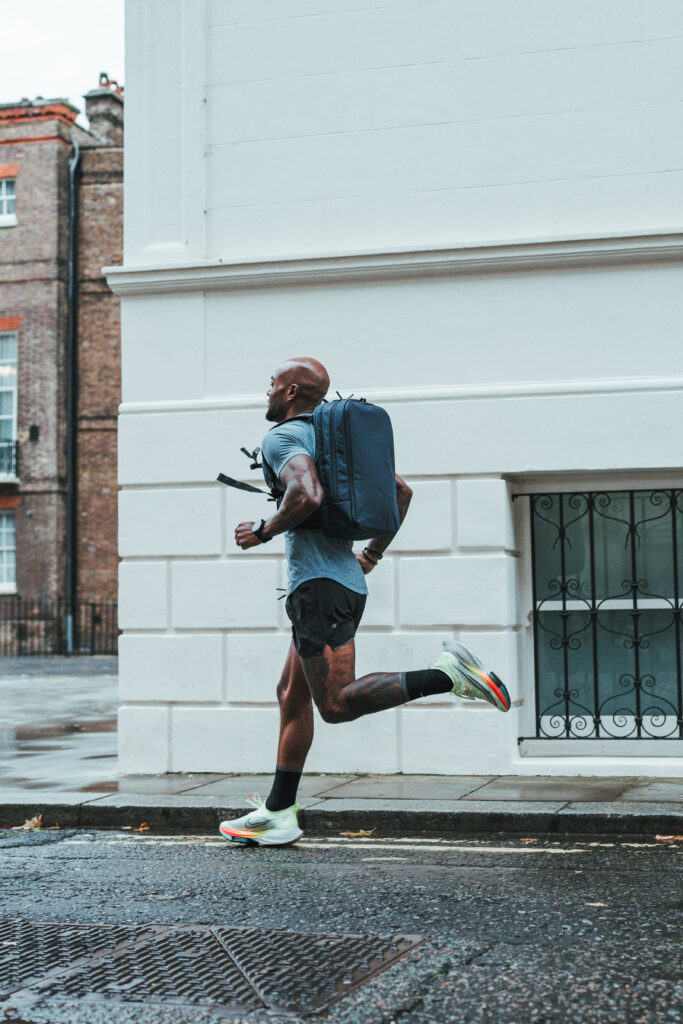
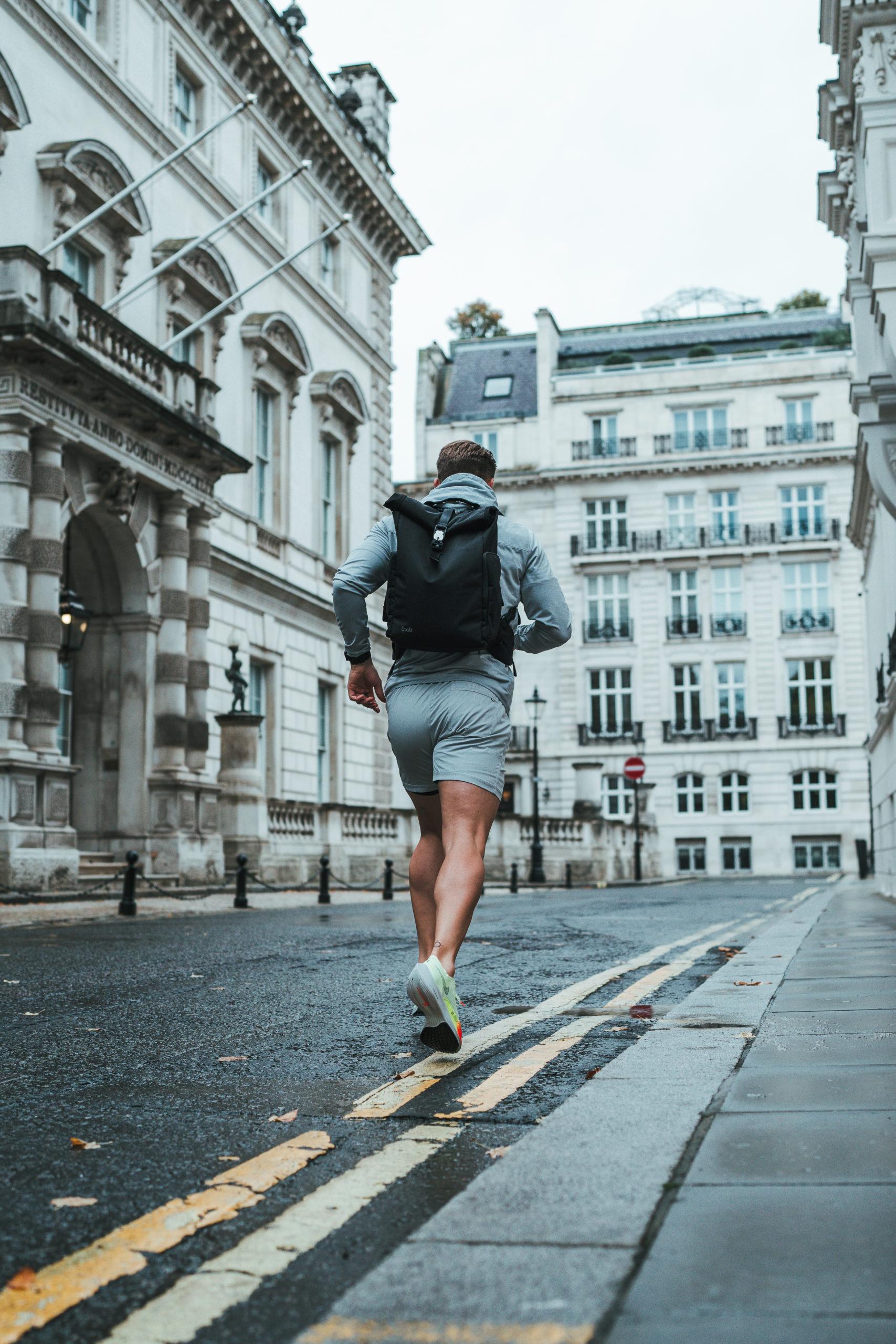

3. Organisation and How to Run with a Laptop
This is key! When running with a backpack, your belongings need to be securely organized so they don’t move around while you’re pounding the pavement.
When designing Stolt run commuter backpacks, optimizing organization has always been a priority for us:
- Every design has a separate business compartment with a padded laptop sleeve. The laptop sits closest to your back, which helps limit movement.
- The designs allow for size adjustability — whether you’re carrying a few items or your whole life with you. The Alpha backpack has an expandable pocket, while the Athlete backpack has a roll top design for adjustability.
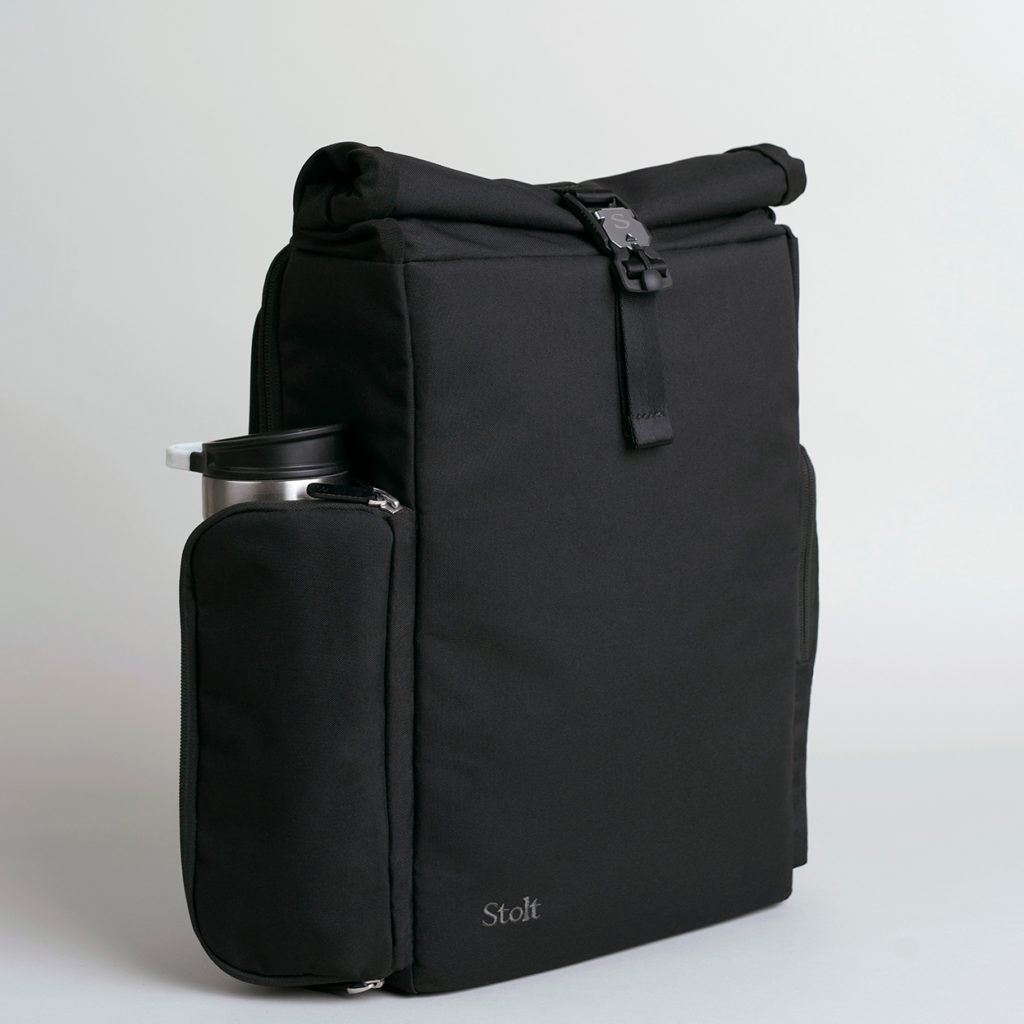
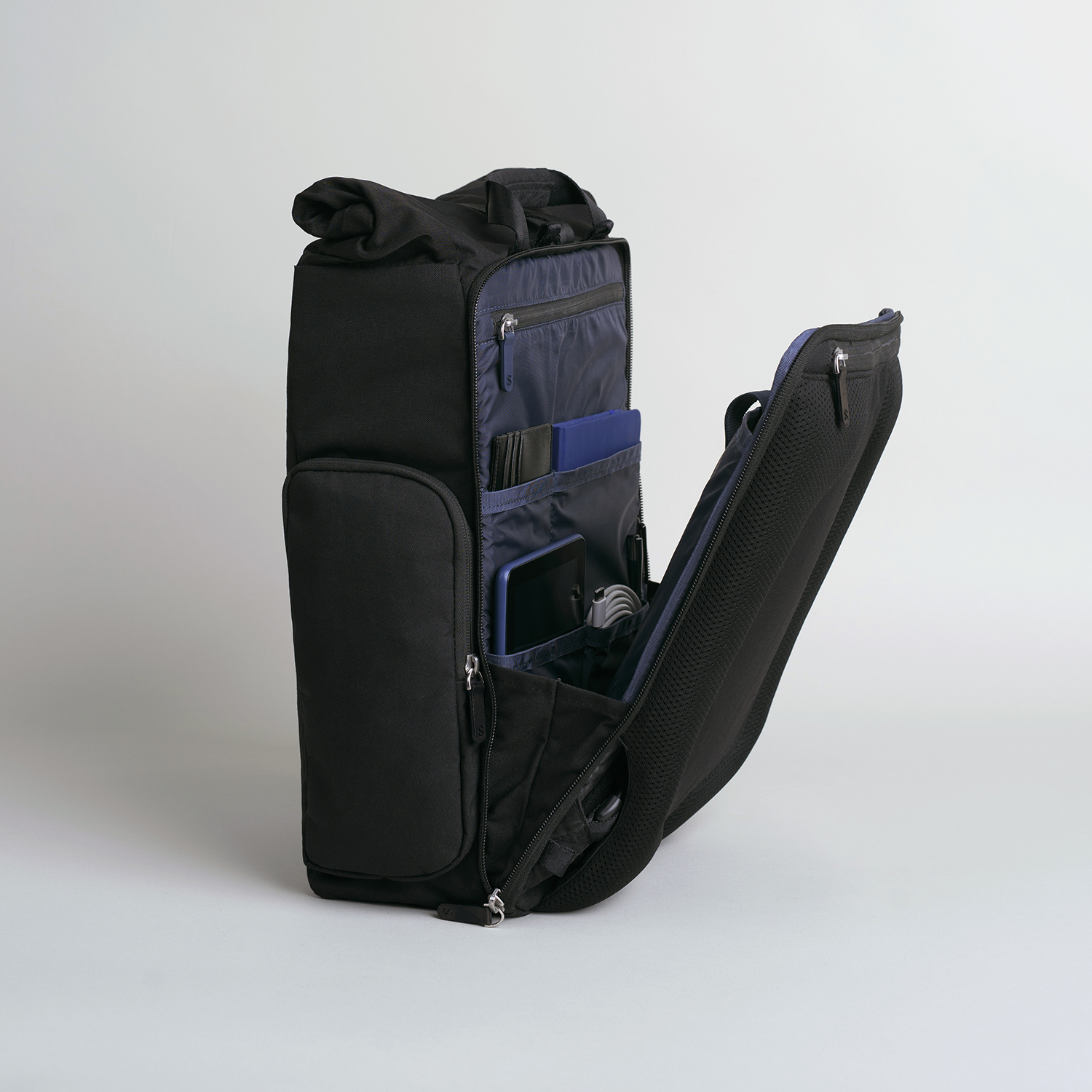
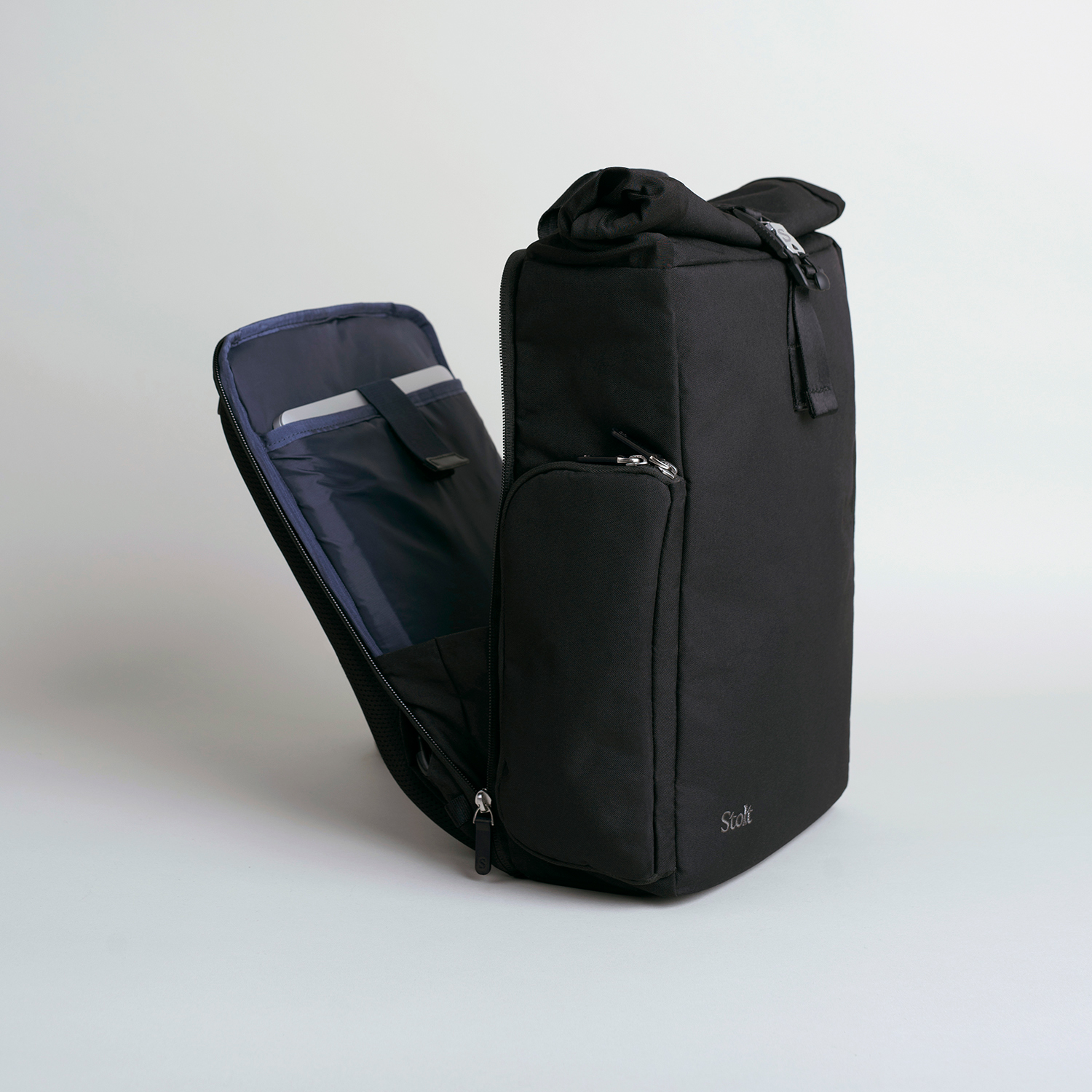
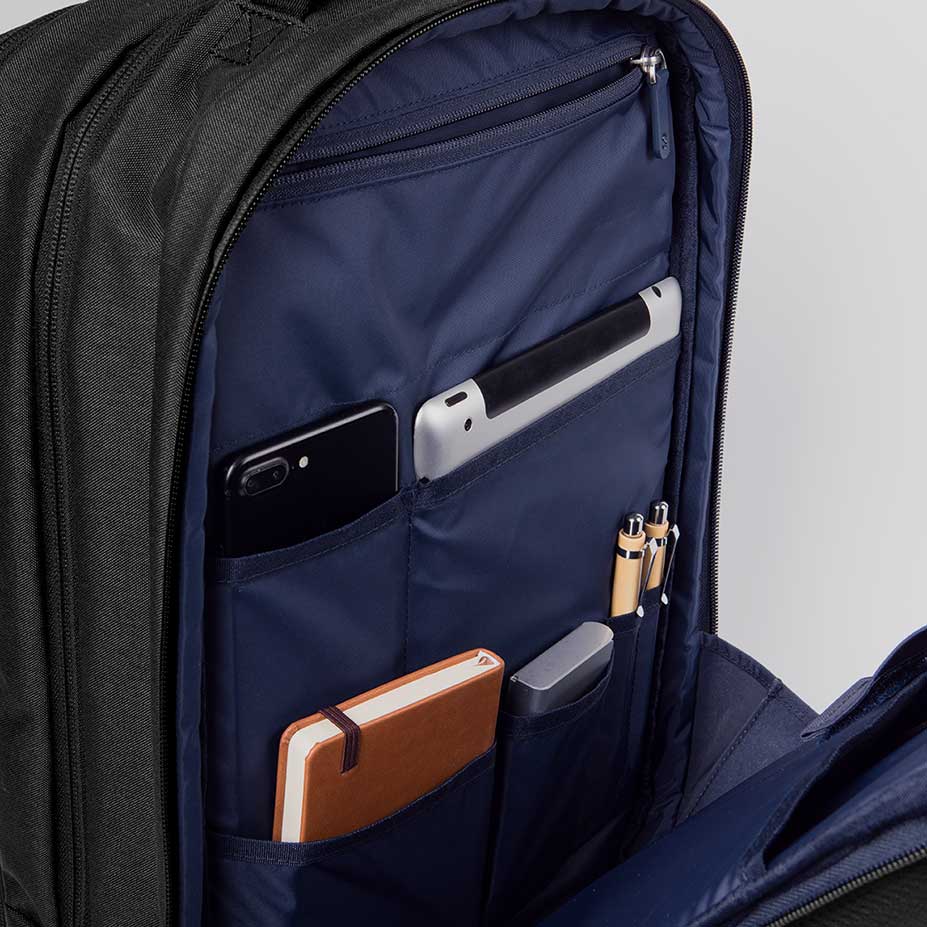
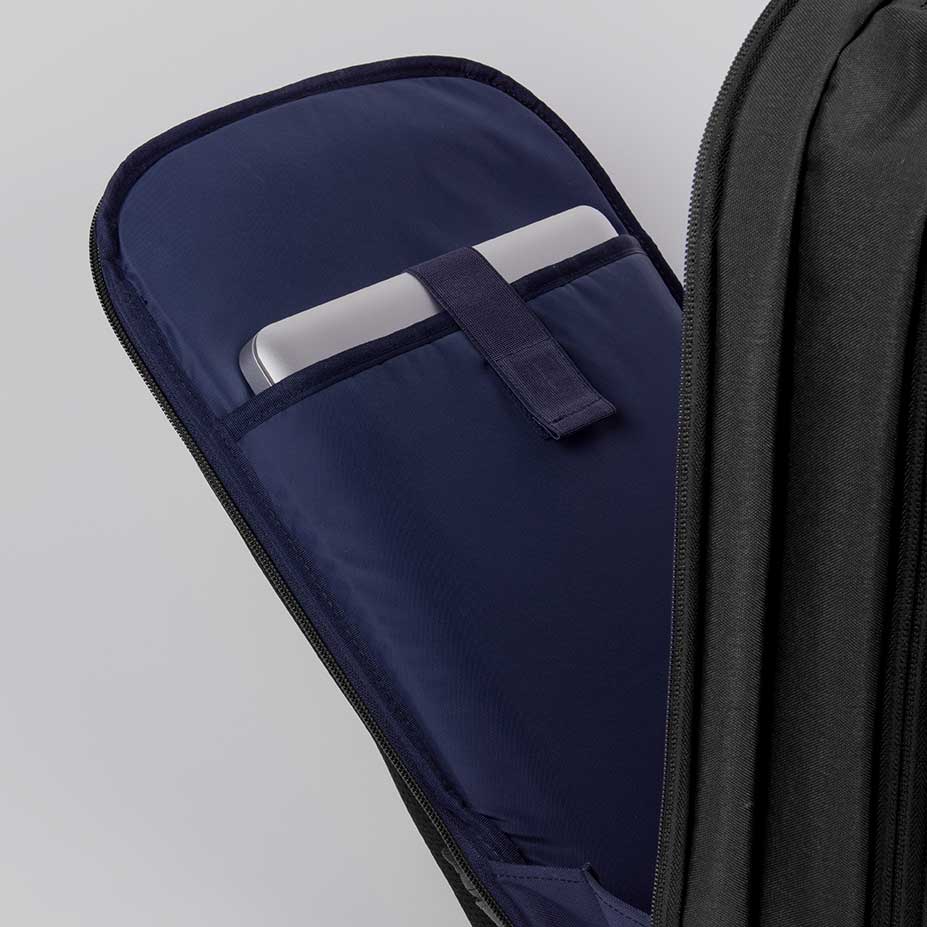
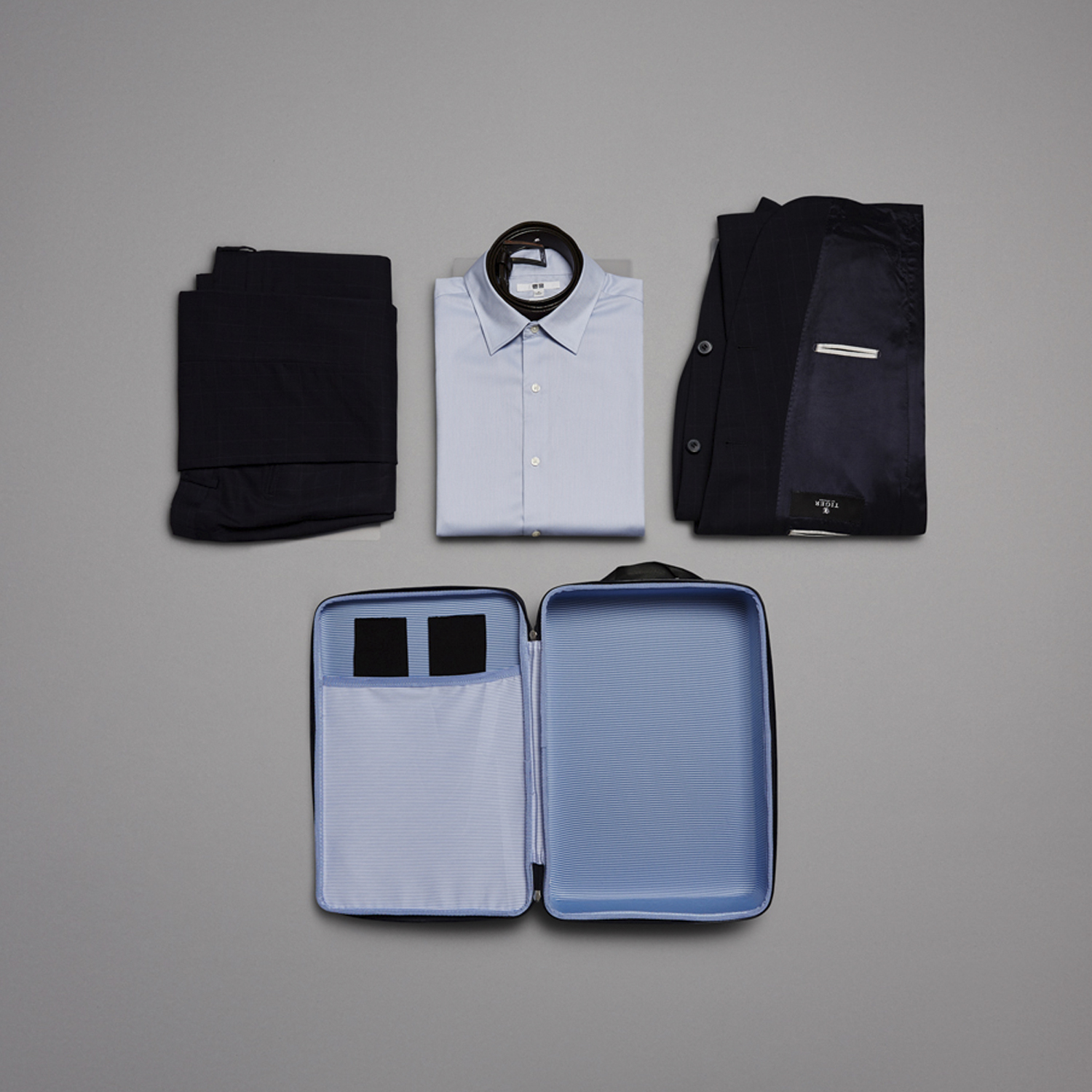
LEAVE YOUR EXCUSES BEHIND
Finally, we believe more people could run commute to work if they really wanted to. We sometimes hear people say things like, “I need to drop my children off at school” or “I’m just too tired or busy in the mornings.”
We face similar challenges here at Stolt, so we encourage you to plan ahead. Maybe you can walk your children to school (or take a bus?) and then run from there. Run commuting often saves you time rather than reducing it.
So go ahead, take the leap, and join us in run commuting!

